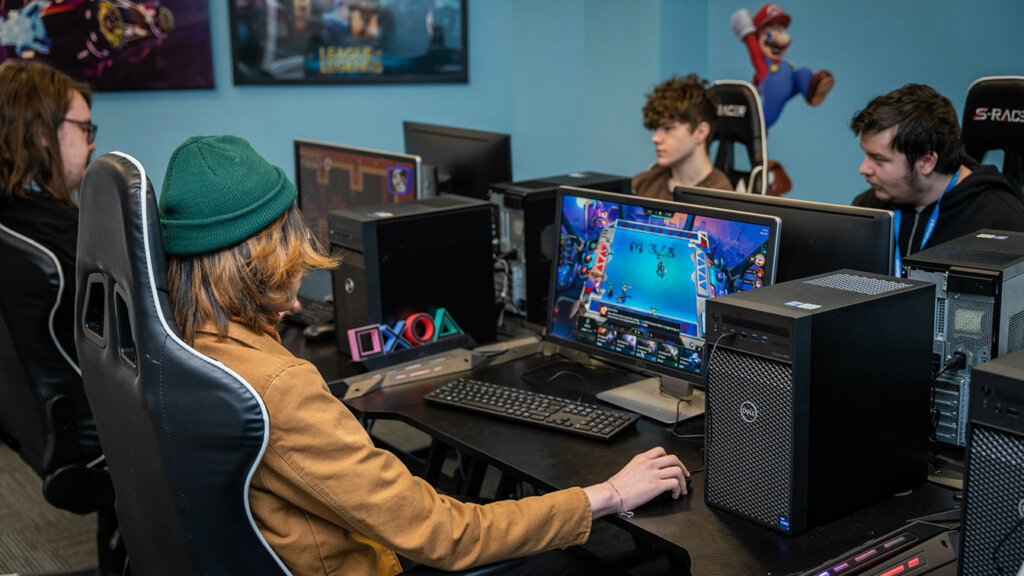In an era where video games are enjoyed across borders and cultures, making a game resonate with players worldwide has become essential. Video game localization is the art and science of adapting a game to suit diverse languages, cultures, and expectations, transforming it into an experience that feels custom-made for each player, no matter where they are in the world.
This article will delve into what video game localization entails, why it’s vital for the industry and the intricate process that ensures players around the globe can enjoy the same immersive experience.
From understanding localization versus translation to exploring common challenges and solutions, this is our guide to how studios bring games to life for diverse audiences.
What is video game localization?

Video game localization goes beyond simply translating in-game text from one language to another. It is a complex adaptation process that considers linguistic, cultural, and technical elements to make a game feel authentic to players in any given region.
The goal is to preserve the game’s tone, narrative, humor, and emotional impact while adapting it to the cultural context of the target audience.
For this reason, localization might involve more complex aspects such as modifying graphics, symbols, or references that might not make sense in the new culture and adjusting character names, background settings, or even jokes to align with regional norms.
Localization transforms a game into an experience that doesn’t just work in different languages – it feels right for different cultures.
Why is video game localization important?
Video game localization is essential for studios looking to reach a global audience and tap into international markets.
In an industry that is expected to exceed $300 billion in revenue by 2025, games that limit their reach to a single language or culture risk missing significant growth opportunities. Localization broadens a game’s appeal, ensuring it resonates with players from different cultural backgrounds.
Localized games can access new markets, increasing their potential customer base, thus creating an immersive experience, leading to higher player satisfaction and loyalty, demonstrating respect for diverse cultures, and enhancing their global reputation and brand trust.
Key elements of video game localization
Successful video game localization requires a detailed, multistep approach, with each stage addressing specific aspects of language, culture, and design.

Linguistic Translation
This step involves translating all in-game text, including dialogue, item names, menu options, and instructions. A direct translation is rarely effective; instead, translators work to retain the spirit and context of the original text.
Cultural Adaptation
Certain themes, symbols, or colors carry unique meanings in different cultures. For example, while white is associated with purity in Western cultures, it’s often linked with mourning in Eastern cultures.
Video game localization may require changing colors, graphics, or references that could otherwise cause confusion or even offend players in specific regions.
Voice Acting and Audio Localization
Audio localization includes recording new voiceovers in different languages, ideally with native speakers, to ensure natural-sounding dialogue. Adapting sound effects, music, and voice acting allows players to connect emotionally with the characters and story, creating a more immersive experience.
User Interface (UI) and Design Adaptations
The layout, design, and even fonts of the user interface may need adjustments to accommodate languages with different character sets or text directions (such as Arabic or Hebrew). Design localization ensures the game remains visually appealing and accessible in every language.
Legal and Compliance Adjustments
Each region has unique laws and cultural expectations that can affect in-game content. For instance, certain countries have restrictions on the portrayal of violence or gambling, requiring studios to make changes to ensure compliance with local regulations.
Testing and Quality Assurance (QA)
QA testing for localized games involves more than just checking for translation errors. It requires playtesting to ensure the overall player experience remains consistent. Testers verify that every element works as intended in the localized version, from linguistic accuracy to gameplay mechanics and cultural nuances.

Read also: Testing strategies – quality control in the digital age
Common challenges of video game localization
Localizing a video game is no small feat, and studios often encounter challenges throughout the process.
One of the biggest challenges is balancing consistency with cultural flexibility. Staying true to the original game’s essence while making adjustments for cultural compatibility can be a balancing act. The key is to maintain core themes, character personalities, and plot points without alienating local audiences.
Managing technical constraints can be another big problem. Some games, especially older ones, were not designed with localization in mind, leading to technical limitations. For instance, text boxes might have limited space, requiring creative solutions to fit translations.
In these cases, localizers often work closely with developers to modify code or design if needed.
Humor, idioms, and culturally specific references can be tricky to translate. Jokes that land perfectly in one language might fall flat or even be misunderstood in another. Localization teams work to replace or adapt humor, aiming to evoke the same emotional response from players in every language.
And finally, many game releases are global, which means studios aim to release localized versions simultaneously across regions. Achieving this requires streamlined workflows and close coordination with localization experts, especially during last-minute script changes or updates.
The role of technology in video game localization
Advancements in technology are making video game localization faster and more efficient. Some technologies that have revolutionized localization include:
- Machine Translation (MT): While human translators are essential for nuanced work, MT helps with bulk translations, allowing teams to speed up the early stages of localization.
- Translation Management Systems (TMS): These tools help track translated assets, manage glossaries, and maintain consistency across large-scale projects.
- AI and Machine Learning: AI-driven tools can assist with contextual translations and provide localization teams with valuable insights, improving accuracy and cultural relevance.

Video game localization is a powerful tool for connecting studios with international audiences
However, effective localization requires expertise, cultural sensitivity, and a deep understanding of the gaming industry’s technical challenges.
When a studio invests in high-quality localization, it’s not just making a game available to a new market – it’s creating a bond with players worldwide. This connection can turn a single title into a global phenomenon, paving the way for long-term success and a loyal fan base.
For game studios aiming to navigate the complexities of localization, partnering with experienced localization professionals is essential. An expert team can streamline the process, ensuring that the game resonates with diverse audiences while maintaining its creative vision.
Here at Main Leaf, we always create our games with localization in mind. Our team helps in video game localization solutions, helping studios bring their games to life across languages and cultures.
With a tailored approach to each project, we ensure your game reaches its full potential, captivating players worldwide. So reach out today to make your game a truly global experience!

